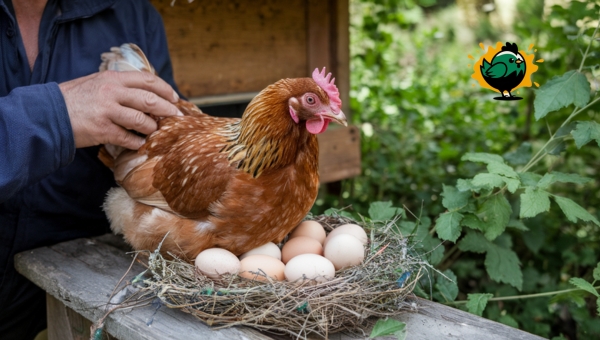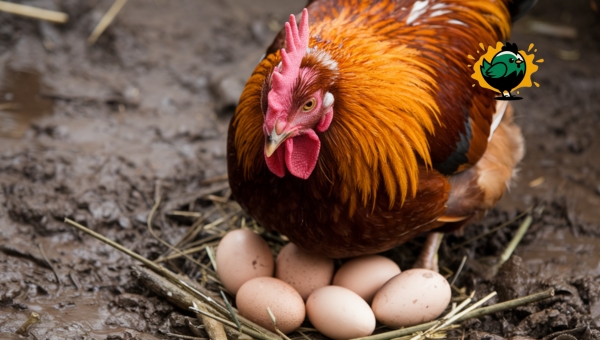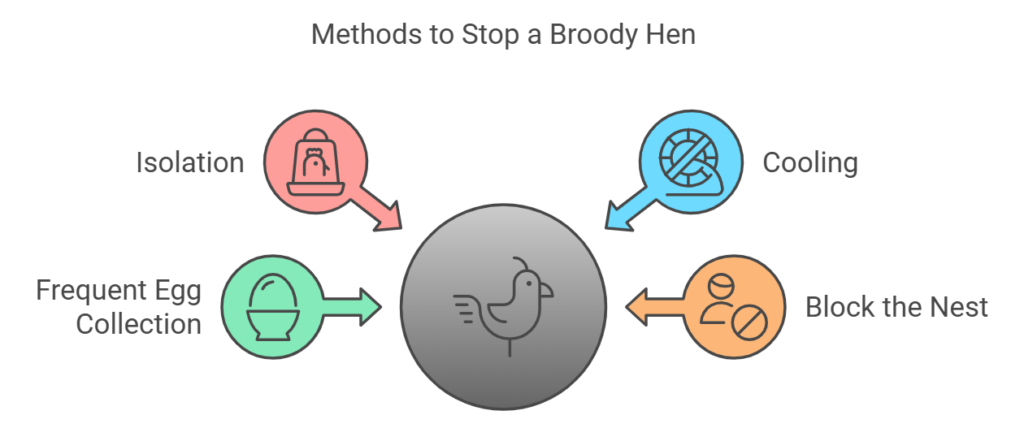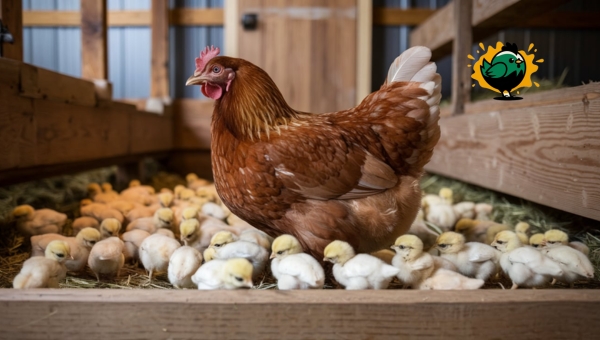How To Stop a Chicken from Brooding – Effective Tips Revealed

Imagine waking up to find one of your hens refusing to leave her nest, day after day. This behavior, known as broodiness, can be challenging for chicken owners. When a hen becomes broody, she focuses on incubating eggs, even if they’re not fertile.
This can lead to decreased egg production and affect the overall dynamics of your flock. If you’re eager to stop a chicken from brooding, understanding the cause and recognizing the signs is crucial. In this article, we’ll explore effective solutions and strategies to manage and prevent broodiness, ensuring that your flock remains harmonious and productive.
Understanding Broodiness in Chickens
Broodiness is a fascinating yet sometimes challenging aspect of chicken behavior. It refers to a hen’s instinct to sit on eggs to hatch them. While this might seem natural, it can be problematic if you’re not looking to expand your flock.

Understanding what causes this behavior and recognizing the signs can help manage it effectively. In this section, we will delve into the causes of broodiness and how to identify a broody hen, ensuring you have the knowledge to address it when it arises.
Causes of Broodiness
Chickens become broody for several reasons, often triggered by instinct and environmental factors:
- Hormonal Changes: Fluctuations in hormones can lead to broodiness, with certain hormones encouraging nesting behaviors.
- Environmental Cues: Factors like daylight length, temperature, and nesting conditions can prompt a hen to become broody.
- Genetic Predisposition: Some breeds are naturally more inclined to broodiness due to their genetic makeup.
- Presence of Eggs: The sight of a clutch of eggs can trigger a hen’s instinct to sit and incubate them.
- Age and Experience: Older hens or those with previous brooding experience may be more prone to this behavior.
Common Signs of a Broody Hen
Identifying a broody hen involves looking for specific behaviors and physical signs:
- Staying in the Nest: A broody hen will spend most of her time in the nesting box, even when there are no eggs.
- Fluffed Feathers: She may puff up her feathers to appear larger and more intimidating to potential threats.
- Aggressive Behavior: A broody hen might become more territorial and peck at anyone trying to remove her from the nest.
- Vocalizations: She might make low, repetitive clucking sounds, which are typical of broody behavior.
- Loss of Appetite: Reduced interest in food as her focus shifts to hatching eggs.
By noting these signs, you can quickly identify and address broodiness in your flock.
Methods to Stop a Broody Hen
To effectively stop a chicken from brooding, consider implementing these methods:

- Isolation: Place the broody hen in a separate cage or pen with no nesting materials. Ensure it has food and water, but without the cozy environment, the hen may lose interest in brooding.
- Cooling: Lower the hen’s body temperature by placing her on a wire-bottom cage. The airflow underneath helps reduce the warmth that encourages broodiness.
- Frequent Egg Collection: Regularly remove eggs from the nesting box. This discourages the hen from settling in to brood.
- Block the Nest: Temporarily block the nesting area to prevent the hen from returning. This disruption can deter her broodiness.
By applying these methods, you can help your hen return to her normal routine.
Long-term Prevention Strategies
Preventing broodiness in chickens isn’t just a one-time task; it requires a thoughtful approach to maintain a productive flock.

Understanding long-term prevention strategies is essential for chicken keepers who want to minimize broody behavior. Let’s explore methods such as choosing non-broody breeds, continuous egg collection, and making environmental adjustments to achieve this goal.
Choosing Non-broody Breeds
When selecting chickens, it’s crucial to choose breeds known for their low tendency to brood. Some breeds are naturally less broody, making them ideal for those who want to minimize this behavior.
Consider these options:
- Leghorns: Known for their high egg production and low broodiness.
- Ancona: A less broody breed that lays consistently.
- Hamburg: Excellent layers with minimal broody tendencies.
Choosing the right breed can significantly reduce the likelihood of broodiness in your flock.
Continuous Egg Collection
Regular egg collection plays a key role in preventing broodiness. Here are some tips to implement this practice:
- Frequent Checks: Gather eggs multiple times daily to avoid leaving them in the nest.
- Use of Nest Boxes: Ensure nest boxes are easily accessible and comfortable for hens.
- Prompt Removal: Remove eggs as soon as possible to discourage hens from sitting on them.
By consistently collecting eggs, you can help deter broodiness in your hens.
Environmental Adjustments
Making changes to the environment can deter hens from becoming broody. Consider these adjustments:
- Lighting Control: Use artificial lighting to maintain consistent day lengths.
- Nest Box Design: Ensure nest boxes are well-ventilated and not too enclosed.
- Space Management: Provide ample space for hens to roam and avoid overcrowding.
These environmental tweaks can create a less inviting setting for broodiness, helping to maintain a harmonious flock.
Also Read: Chicken Worms | Essential Guide to Healthy Poultry
Potential Challenges and Solutions
When it comes to dealing with broodiness, there are a few challenges that chicken keepers might face. Understanding these issues is key to finding effective solutions. Let’s explore some common hurdles and how to tackle them.
Persistent Broodiness
Persistent broodiness can be a challenging issue for chicken owners. A hen that remains broody despite interventions can affect egg production and overall flock health. Here are some strategies to address this:
- Isolation: Temporarily separating the broody hen from the nest can help break her broodiness.
- Cooling Methods: Placing the hen in a wire-bottomed cage can cool her underside, discouraging broody behavior.
- Blocking Nest Access: Preventing access to nesting areas can deter the hen from continuing her broody habits.
Impact on Flock Dynamics
Broodiness doesn’t just affect the broody hen; it can also disrupt the harmony of the entire flock. Here’s how it impacts and what can be done:
- Pecking Order Disruptions: Broody hens can cause shifts in the social hierarchy, which might lead to stress among flock members.
- Resource Competition: Broody hens often monopolize nesting boxes, leading to conflicts over resources.
- Solutions: Regularly monitor flock behavior and provide additional nesting boxes to alleviate competition.
Conclusion
Stopping a chicken from brooding requires understanding the causes, recognizing the signs, and implementing effective methods. By choosing non-broody breeds and making environmental adjustments, you can significantly reduce the chances of broodiness.
It’s crucial to be aware of the potential challenges, such as persistent broodiness and impacts on flock dynamics, and address them promptly. With the right strategies, keeping your hens productive and your flock harmonious is achievable. Regular assessment and proactive measures are essential to maintaining a healthy flock.
To explore more insightful tips and strategies on managing your flock, be sure to check out other informative blogs on our site!
